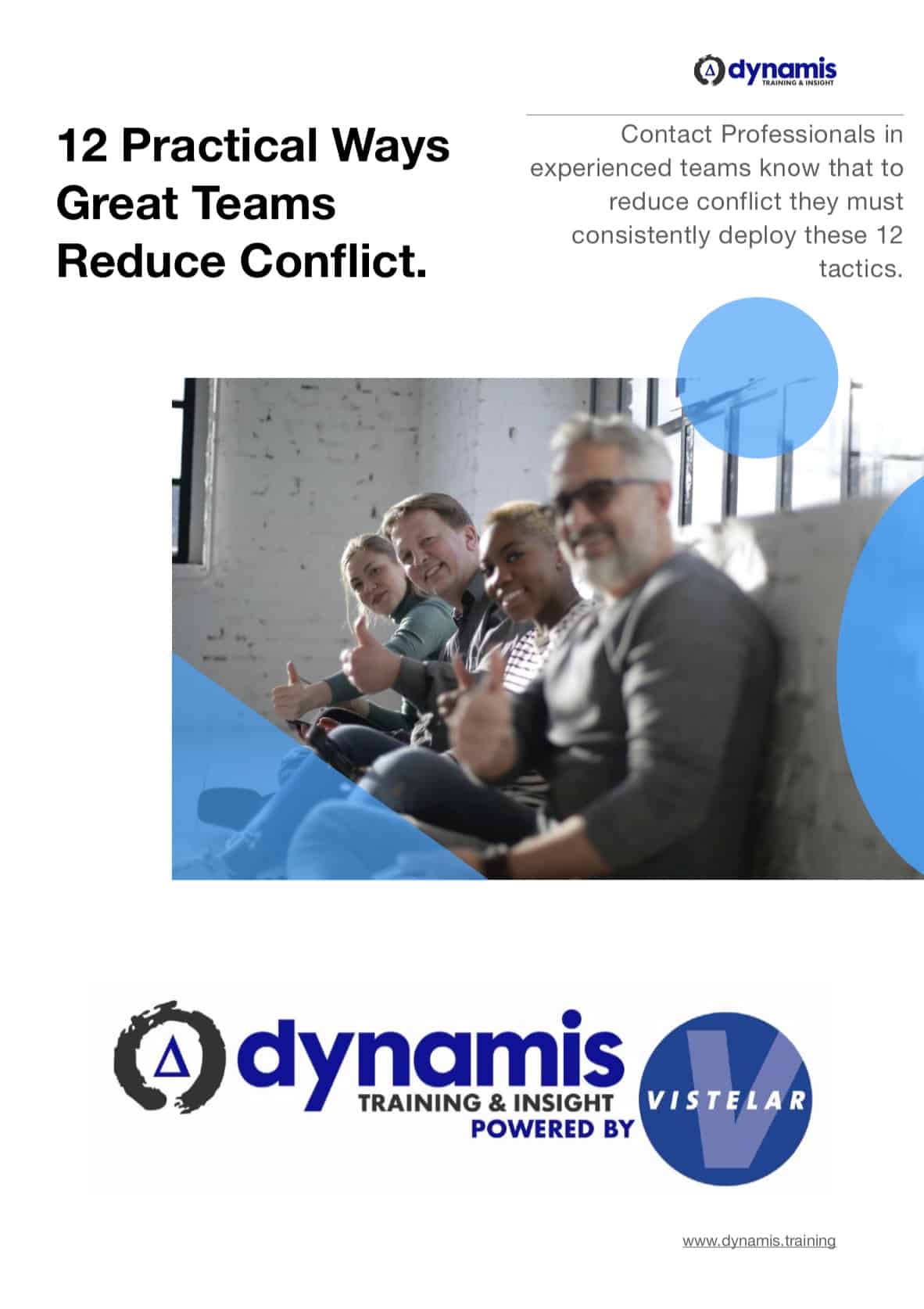Ambulance Staff Personal Safety: a cautionary tale
Several years ago I was fortunate to be asked to present at a national conference for trainers in the prevention and management of violence and aggression. While I was there, I had the great privilege to hear and record* this talk by “the most violently injured paramedic in the UK” at the time. The speaker was 15yr veteran of the ambulance service – loved her job and says “my job is making people feel better”. This talk is about “the worst day” of her life, in September 2005 her ambulance was called to a young man who was unconscious due to an overdose. This is her story.
*I used a fairly primitive MP3 player which regularly picks up the radio interference from my mobile phone – lesson learned – and my apologies for the poor sound quality of this clip, but I believe the importance of the story merits its wider dissemination!
At the beginning of this story, when the paramedic arrived at her call, she noticed a nice house, no signs of danger anywhere. She had spoken to the control room en route to confirm the location and address – there were “no alarm bells”
- “you don’t do this job for long before you learn to have 360-panorama vision – I have eyes in the back of my head!”.
She entered the room, there was male stretched out on the settee in his boxer shorts. She knelt down to initiate contact and begin the opening assessment, asked the family to leave the room. When she turned around – patient was now on his feet, naked, and was suddenly punching her in the face.
He continued to assault her for 22 long minutes.
The drug he had taken made him unusually strong (“like three or four guys”). He kicked, punched, bit, tried to smash the TV, throw tables. The fight mostly took place on the ground – he would surge in energy and then tire quickly and rest for 10-15 seconds
- “I couldn’t leave – as soon as one of us took any pressure off this guy, he completely overpowered us…If I could have run, I would have – he looked at me and knew I was the smallest of the two”
The team had had NO physical skills training at this point – their natural instinct was to restrain the man on the ground even though the risk of sudden death with his type of overdose was exceptionally high. At points she had her knee across his neck as it was the only way to control him and stop him from hurting her.
During the control phase, the paramedic attempted to call her control room 3 times but was cut off. The control room operatprs subsequently admitted they could hear what was going on. She had to call the police herself
What stopped her leaving? 6 adults stood in the doorway and hallway and watched the incident unfold – blocking her escape route and “a howling, screaming granny who was absolutely horrified at her naked grandson behaving in such a manner…” She believes that the public see people in uniform and believe that they “are the experts”.
When the police arrived, it took 4 of them assisting the 2 paramedics to restrain, cuff and move the man. In the end the man had struggled and fought their control for at least 40 minutes. He was still trying to bite as they took him to the ambulance in cuffs. Her colleague tried to assist the restraint but her feeling was that he was not in the right condition, physically, to properly assist her.
Ambulance Staff Personal Safety
- Ironically, she was provided with obsolete and old-model breakaway and de-escalation (PMVA) training a few weeks after the assault. Colleagues had been given initial training but had been provided with no updates in 6-7 years.
- The old-style PMVA training she was given was based on “all that ju-jitsu stuff – if they grabbed you by the hair, tap their hand – that kind of stuff”.
- 5 years after the incident, the organisation hadn’t changed the Ambulance Staff Personal Safety training programme and they hadn’t updated it.
- “what I learned was that all of that….wouldn’t have applied that night. He didn’t actually grab me, pull me or throw me…it was all punches and kicks. There was no ‘physical’ holding on to me. What he did do was pull his knee back to his chest and put his heel through my shoulder and my chest.”
- Use of Force: “The police are allowed to match like for like….we are not allowed to do that”
- “We get told that [reasonable force rules] at college but then we get told all the horror stories [about staff using force and being disciplined]” Basically the answer they give you is RUN AWAY – we have been told that if we raise our hand, the service will NOT support us. We get attacked with weapons all the time – you get punched and you get slapped – you defend yourself as best you can”
Ambulance Staff Personal Safety training should prepare people for the ‘closure’ aspects of incident management
- The paramedic had suffered multiple serious injuries and was left unable to move her arm and in extreme pain (it was subsequently found that her bicep was severed during the assault).
- Her own assessment took 5 hours at the hospital and included being ‘told off’ by the doctors for bringing the violent man into the hospital.
- In the weeks after the incident, the service she worked for would not accept that she had been injured – they said she was pretending her injuries (that her hand would not work). Not a great way to end an Ambulance Staff Personal Safety story!
- 2 months after the incident, her pay was cut to half-pay, she was still waiting for a call from the welfare officer.
- At this point she was unable to do most daily tasks: with broken ribs, she couldn’t use her left arm, couldn’t bend or straighten, had to be bathed and washed by others.
- Eventually she was signed off by the doctor, taking painkillers and in April, went back to work and back on the road.
CONTROL ROOM ERRORS AND VIOLENCE WARNINGS
- the control room failed to call the police, failed to understand what was happening
- while she waited in the hospital, the control room manager offered an apology, because they had TWO violence warnings on the job. The control room knew when the job was assigned that the man was violent, that he was alert, that he had just assaulted his mother and that he was not unconscious.
- questions remained about the incident management, the control room staff, why they didn’t warn the team and whether they were ever made aware of the errors they committed that night. They never heard this Ambulance Staff Personal Safety story.
- management attitude towards the paramedic was to “get a grip” “accept it” and “move on”. She was told: “If you can’t work in an ambulance, there is no place for you in this service”
- There have been no changes at the service – no new warning systems put in place. The control room staff were never informed of their mistake in failing to act on the violence warning, despite the fact that the information was on the screen at the time she was speaking to them.
- The patient, of course, was likely going to become violent anyway, whether she had been warned or not. The difference being that she would have 1) not entered the property until 2) the police arrived to escort her inside.
LONGER TERM AFTERMATH – TRAUMATIC STRESS
The paramedic had a personal history of being a strong, competent independent person and great at coping with emergencies, difficulties and stressful situations.
- “The reason that this incident affected me so badly is because the people I trusted to keep me safe, failed me. They are my only contact with the outside world. They put me in the danger and then they weren’t even there to get me out of it.”
2 years after the incident, a friend took her for coffee. She was not sleeping, not eating. Her friend suggested PTSD – she had disproportionate and extreme responses to situations, had stopped socialising – she had “taken a step off the planet for a little while”. Eventually, she was referred to a high-end PTSD clinic and spent 2 years in treatment, during which time she still had panic attacks at a lack of ability to respond to perceived emergencies. Eventually the pain in her shoulder was properly recognised and treated. At the time of the talk she had had 3 surgeries to re-attach, adjust and then again surgically sever and re-attach her bicep – it is likely that she will never be pain-free
- “I have lived and re-lived and re-lived that night. I live this. I can’t change it.”
- The man who attacked her got a 3 year sentence and served 18 months in jail.
WORKING PROCEDURES FOR Ambulance Staff Personal Safety STILL NOT BEING FOLLOWED
Now back at work, one incident happened where she arrived to an address and decided that the patient posed a violence risk. She fed back to the system to put warnings on the service user, but subsequently found out that the hospital already had warnings on the person. She was subsequently sent back to the address but recognised it. She checked with control who told her there were no warnings on the address. As she greeted the patient, he said, “Morning bitch, you again?!”. On investigation, she was told that there were warning markers on the job.
NOTE THE VALUES-BASE AND MOTIVATION OF A FIRST-RESPONDER
- “You’ve got to remember – all I was focussed on is that what he has taken can ultimately kill him and result in a cardiac arrest. That’s my focus. Believe it or not or as pathetic as that might sound – that was my focus. This young man might ultimately die and [during the incident] I am becoming aware of the fact that I don’t have an arm to perform CPR with. That was ALL I could think about…is that we ALL had to be safe.
- “And I think I spent the whole 22 minutes saying to him for goodness sake will you just lie still, stop fighting us, we’re the Ambulance Service we are trying to help you. We’re not the police. What are you doing? What’re you kicking me for? Stop it!”
- “Yes, I put his clinical needs first – they took priority. Yes I did put myself second. Yes I would go into that house again and yes I would treat that man again.”
WERE LESSONS LEARNED FOR Ambulance Staff Personal Safety?
- “What is it actually going to take for this service to go to the control room and say “guys not good enough – do your job!” – are we going to have to wait for someone to get shot, raped, or murdered? I was told I was being dramatic.”
- “I’m the most severely injured paramedic in the UK – if that isn’t enough to make them follow their own policies and procedures then what difference will a man in a robe [a judge] telling them?”
Gerard O’Dea provides tailored PMVA training courses for hospital and healthcare services where people are treated with dignity and shown respect, even in their most difficult moments. Combining respectful verbalisation skills with last-resort restraint alternatives for personal safety has been his specialty for over ten years as director of training for Dynamis www.dynamis.training/breakaway


